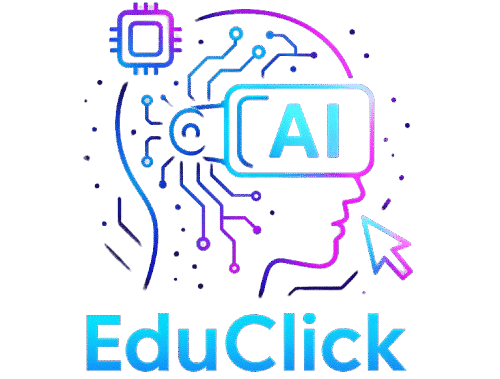The Future of Education: Essential EdTech Tools Transforming the Classroom
Imagine a classroom where technology isn’t just an enhancement but the very fabric of the educational experience. As a teacher, you’ve probably felt the whirlwind of changes that have swept through education over recent years. You remember the days when the chalkboard was your primary tool, and now, you’re navigating a digital landscape filled with seemingly limitless possibilities. It might feel daunting at times, like you’re charting unknown territory. But in reality, you’re at the frontier of an educational revolution that promises to enrich learning experiences and cater to the diverse needs of your students.

Reflect on the first time you introduced a new piece of technology in your classroom. Perhaps it was an interactive whiteboard or a collaborative app that allowed your students to learn beyond textbooks. The excitement in their eyes mirrored your own curiosity and apprehension. You realized that these tools could transform not just how information is delivered but how students interact with knowledge and with each other. Emotional connections in learning aren’t just reserved for face-to-face interactions anymore; technology can bridge that gap, offering new ways to engage and inspire.
In this article, we’ll explore the future of education through the lens of essential EdTech tools that every teacher should consider. These tools are more than just gadgets; they represent a paradigm shift in how education is perceived and delivered. We’ll delve into the practical applications of remote learning strategies, the integration of AI in classrooms, and how these innovations can help you foster a more inclusive and effective learning environment. Whether you’re an early adopter or a cautious observer, understanding these tools will empower you to make informed decisions that benefit your students and your teaching practice.
Revolutionizing Remote Learning Strategies
Virtual Classrooms
Virtual classrooms have become the cornerstone of modern education, especially in remote learning environments. They allow you to recreate the dynamics of a physical classroom with digital tools.
- Interactive Whiteboards: Use platforms like Zoom or Microsoft Teams for real-time collaboration and annotation, enhancing student engagement.
- Breakout Rooms: Facilitate small group discussions, encouraging peer-to-peer learning and personalized attention.
- Recorded Sessions: Offer students the ability to revisit lessons, catering to different learning paces and styles.
Online Assessment Tools
Evaluation methods have evolved with technology, providing you with more efficient and comprehensive ways to assess student performance.
- Automated Grading: Tools like Google Forms and Quizlet offer instant feedback, freeing up your time for more personalized teaching.
- Adaptive Testing: Platforms such as Kahoot! tailor questions to the student’s ability, providing a customized evaluation experience.
- Data Analytics: Gain insights into student progress and areas of improvement with analytics features that track performance trends over time.
Digital Resource Libraries
Access to vast repositories of information has never been easier, allowing you to supplement traditional resources with digital content.
- E-books and Journals: Platforms like JSTOR and Project Gutenberg offer a wealth of academic resources at your fingertips.
- Open Educational Resources (OER): Websites like Khan Academy provide free, high-quality educational materials applicable across various subjects.
- Multimedia Content: Incorporate videos, podcasts, and interactive simulations to diversify your teaching materials and appeal to different learning styles.
Integrating Artificial Intelligence in Education
Personalized Learning
AI is at the forefront of creating customized learning experiences tailored to individual student needs and preferences.
- Adaptive Learning Platforms: Systems like DreamBox adapt to each student’s learning style, providing content that challenges and supports growth.
- AI Tutors: Virtual assistants like IBM’s Watson Tutor offer on-demand support, answering student queries and explaining complex concepts.
- Customized Feedback: AI-powered tools analyze student work to give personalized feedback that enhances learning outcomes.
Automation of Administrative Tasks
AI can streamline administrative duties, allowing you to focus more on teaching and less on paperwork.
- Scheduling and Attendance: Tools like ClassDojo automate attendance tracking and schedule management, keeping everything organized.
- Communication Management: AI-driven applications automate routine communications, ensuring parents and students stay informed.
- Grading Automation: AI systems handle repetitive grading tasks, offering immediate results and freeing up your time for student interaction.
Enhancing Student Engagement
Incorporating AI into your teaching strategies can significantly boost student participation and interest.
- Gamified Learning: Tools like Prodigy use game mechanics to make learning enjoyable and competitive, increasing student motivation.
- Interactive Chatbots: Implement chatbots to engage students with interactive quizzes and challenges outside of classroom hours.
- Collaborative AI Projects: Encourage students to work on AI-driven projects that foster collaboration and critical thinking skills.
🎥 Vídeo complementar sobre o tópico
Virtual Reality and Augmented Reality in the Classroom
Creating Immersive Learning Experiences
Virtual Reality (VR) and Augmented Reality (AR) offer unprecedented opportunities for immersive learning, bringing abstract concepts to life.
- Virtual Field Trips: Platforms like Google Expeditions allow students to explore historical sites and natural wonders without leaving the classroom.
- Science Simulations: Use VR tools to conduct virtual experiments, providing a risk-free environment to explore scientific principles.
- 3D Modeling: AR applications like Tinkercad enable students to visualize and manipulate 3D models, enhancing spatial awareness and creativity.
Enhancing Creative Expression
AR and VR tools are invaluable in facilitating creative expression, enabling students to produce and engage with content in innovative ways.
- Interactive Storytelling: Encourage students to create immersive stories using VR platforms that combine writing with visual creativity.
- Art and Design Projects: Use AR apps to create digital art, allowing students to experiment with new mediums and techniques.
- Music and Performance Arts: VR tools can simulate performance settings, giving students a platform to practice and hone their abilities.
Supporting Diverse Learning Needs
These technologies can be particularly effective in addressing diverse learning needs, offering customized and accessible education solutions.
- Special Education Support: VR applications like Floreo assist students with autism in developing social skills through guided experiences.
- Language Learning: AR apps provide interactive language practice, improving proficiency through immersive conversation simulations.
- Assistive Technologies: Utilize VR and AR to aid students with physical disabilities in accessing and interacting with educational content.
Collaborative Platforms and Tools
Enhancing Student Collaboration
Collaboration is a critical skill for the future, and digital tools can facilitate teamwork and communication among students.
- Document Sharing: Google Workspace offers tools for real-time document collaboration, enabling synchronous and asynchronous teamwork.
- Project Management: Tools like Trello and Asana help students organize group projects, track progress, and meet deadlines.
- Discussion Forums: Platforms like Edmodo provide spaces for students to discuss topics, share insights, and collaborate on assignments.
Professional Development for Educators
Staying updated with the latest teaching strategies and tools is vital, and collaborative platforms offer opportunities for professional growth.
- Online Communities: Join networks like TeachMeets to connect with other educators, share resources, and discuss best practices.
- Webinars and Workshops: Participate in virtual events that explore emerging trends and technologies in education.
- Resource Sharing: Utilize platforms such as Pinterest and Teachers Pay Teachers to discover and share educational materials.
Facilitating Parent-Teacher Communication
Effective communication with parents is crucial for student success, and technology can enhance these interactions.
- Parent Portals: Systems like PowerSchool provide parents with access to their child’s academic records and school updates.
- Messaging Apps: Use apps such as Remind to send quick updates and reminders to parents, ensuring they are involved in their child’s education.
- Virtual Conferences: Conduct parent-teacher meetings via video conferencing tools, making it easier for working parents to participate.
Data-Driven Decision Making in Education
Leveraging Learning Analytics
Learning analytics provide valuable insights into student performance, allowing you to make informed decisions that enhance educational outcomes.
- Performance Dashboards: Use dashboards to track student progress, identify trends, and tailor instruction to meet individual needs.
- Predictive Analytics: Implement tools that analyze data to predict student success and identify at-risk learners, enabling early intervention.
- Feedback Mechanisms: Analyze data from assessments and surveys to continuously improve teaching methods and curriculum design.
Optimizing Curriculum Development
Data-driven insights can inform curriculum development, ensuring that educational content is relevant and effective.
- Curriculum Mapping: Use data to align curriculum with educational standards and track coverage across grades and subjects.
- Content Relevance: Analyze student engagement data to refine curriculum content, focusing on areas that resonate with learners.
- Adaptive Learning Paths: Develop personalized learning paths based on data analysis, accommodating diverse student needs and interests.
Enhancing Institutional Efficiency
Data analytics can streamline administrative processes, improving efficiency and resource allocation within educational institutions.
- Resource Management: Analyze usage data to optimize the allocation of resources, such as classroom space and technology.
- Enrollment Analysis: Use data to predict enrollment trends and adjust staffing and resources accordingly.
- Operational Efficiency: Implement analytics to streamline operations, reduce costs, and enhance the overall educational experience.

FAQs About Must-Have EdTech Tools for Teachers
What are the benefits of using EdTech tools in education?
EdTech tools enhance the learning experience by providing interactive and personalized learning paths, increasing student engagement, and improving information retention. They also offer teachers tools for efficient classroom management, streamlined administrative tasks, and access to a wealth of resources for continuous professional development.
How can AI improve student learning outcomes?
AI can tailor learning experiences to individual student needs, offering personalized feedback and adaptive learning paths. It identifies areas where students struggle and provides additional resources or exercises to address these gaps, ultimately leading to improved academic performance and confidence in learning.
What role do virtual and augmented reality play in education?
Virtual and augmented reality create immersive learning experiences, allowing students to explore environments and concepts that are otherwise inaccessible. These technologies support experiential learning, enhancing understanding and retention by engaging multiple senses and encouraging active participation.
Can EdTech tools facilitate better parent-teacher communication?
Yes, EdTech tools such as parent portals, messaging apps, and virtual conferencing platforms enable seamless communication between parents and teachers. These tools keep parents informed about their child’s progress and school events, fostering a collaborative approach to education.
What are some challenges of implementing EdTech in the classroom?
Challenges include ensuring equitable access to technology, providing adequate training and support for teachers, and addressing privacy and data security concerns. Schools must also consider the cost of implementation and ongoing maintenance of EdTech tools.
How do data analytics enhance educational decision-making?
Data analytics provide insights into student performance, helping educators tailor instruction and resources to meet individual needs. By understanding trends and patterns, educators can make informed decisions that improve teaching strategies, curriculum development, and institutional efficiency.
What are examples of collaborative platforms that benefit teachers?
Platforms like Google Workspace, Trello, and Edmodo facilitate collaboration among students and teachers. These tools support project management, real-time document editing, and virtual discussions, enhancing communication and teamwork in educational settings.
How does EdTech support remote learning strategies?
EdTech tools facilitate remote learning by offering virtual classrooms, digital resource libraries, and online assessment tools. These technologies provide flexibility and accessibility, allowing students to learn at their own pace and from any location, while maintaining a structured learning environment.
Are there any EdTech tools specifically for special education?
Yes, there are EdTech tools designed to support special education, such as VR applications that help develop social skills and interactive platforms that offer personalized learning experiences. These tools address diverse learning needs, making education more inclusive and accessible.
Conclusion: Embracing the Future of Education
As you stand at the crossroads of tradition and innovation, the future of education beckons with boundless possibilities. The integration of EdTech tools is not just about keeping pace with technological advancements; it’s about creating a more inclusive, engaging, and effective learning environment for your students. By embracing these tools, you empower yourself to meet the evolving needs of the educational landscape and equip your students with the skills necessary for success in an increasingly digital world.
Reflect on the transformative potential these technologies hold. From personalized learning experiences powered by AI to the immersive worlds crafted by virtual reality, the classroom of tomorrow is a dynamic space where technology and pedagogy converge. This is your opportunity to redefine education, to inspire and motivate your students in ways that were once unimaginable.
As you integrate these tools into your teaching practice, remember that change is a journey, not a destination. Engage with your peers, share your experiences, and continue to explore new possibilities. Your commitment to embracing the future of education is a testament to your dedication to your students’ success.
Take the first step today. Experiment with an EdTech tool that resonates with you and your teaching goals. Observe its impact, gather feedback, and iterate. Together, we can shape the future of education, one innovative tool at a time.
Key Takeaways
- EdTech tools, including virtual classrooms and AI-driven platforms, are revolutionizing the classroom by facilitating remote learning and personalized education.
- Virtual and augmented reality offer immersive learning opportunities that enhance understanding and engagement in complex subjects.
- Collaborative platforms improve student teamwork, teacher professional development, and communication with parents, fostering a supportive educational ecosystem.
- Data-driven decision-making empowers educators by providing insights into student performance, curriculum effectiveness, and institutional efficiency.
- Embracing EdTech tools requires addressing challenges such as equitable access, teacher training, and data privacy, but the benefits far outweigh the obstacles.




